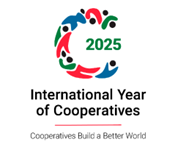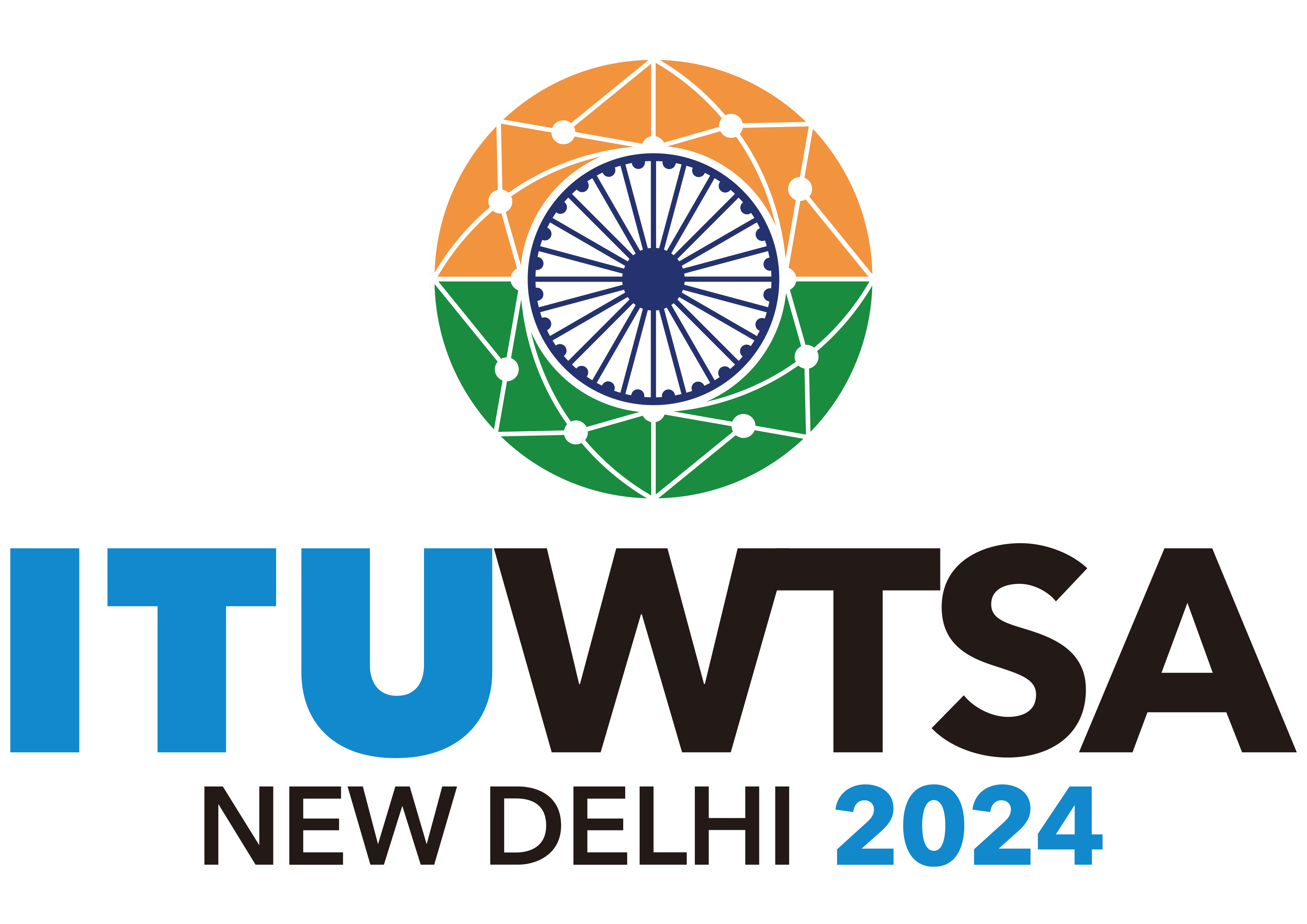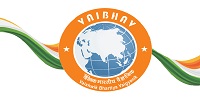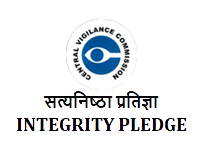The Government of India launched National Action Plan on Climate Change (NAPCC) on 30thJune, 2008 outlining eight National Missions on climate change. These include:
- National Solar Mission
- National Mission for Enhanced Energy Efficiency
- National Mission on Sustainable Habitat
- National Water Mission
- National Mission for Sustaining the Himalayan Eco-system
- National Mission for a Green India
- National Mission for Sustainable Agriculture
- National Mission on Strategic Knowledge for Climate Change
The Department of Science & Technology, Ministry of Science & Technology was entrusted with the responsibility of coordinating two out of these eight national missions on climate change. These are:
- National Mission for Sustaining Himalayan Ecosystem (NMSHE) and
- National Mission on Strategic Knowledge for Climate Change (NMSKCC)
Objectives:
Both of these missions - NMSHE & NMSKCC - focus on building national S&T capacities in the area of climate change. While main objective of NMSHE is to develop a capacity to scientifically assess the vulnerability of the Himalayan region to climate change and continuously assess the health status of the Himalayan ecosystem, NMSKCC focuses on building human and institutional S&T capacities in climate change and developing strategic knowledge in the key areas of climate change science, adaptation and mitigation.
National Mission on Strategic Knowledge for Climate Change (NMSKCC)
The consequences of climate change on the social systems are expected to vary in different regions of the world on account of several regional and other local factors. Therefore different modeling studies, adaptation strategies and technology systems would be required in differing geographical and social contexts. Further, there are many uncertainties in disaggregating the effects of global warming on different agro climatic regions due to still inadequate scientific understanding of the processes involved in the climate change. This would require developing a strong capability in basic and applied research in climate science by strengthening observational and modeling tools and systems. India is too large a country to adopt strategies based on global averages of climate change. The current levels of uncertainties associated with likely consequences of climate change in various regions of the country are significant and do not enable the development of strategic action plans for different regions within the country. There are a number of constraints that limit at present the ability of the national knowledge system to deliver the required and expected outcomes for effective response. Addressing these constraints through strategic actions that include the development of appropriate institutional and human resource capacity for this purpose will form the main goal of the National Mission on Strategic Knowledge for Climate Change. Accordingly, the following objectives have been identified for the Mission.
- Formation of knowledge networks among the existing knowledge institutions engaged in research and development relating to climate science and facilitate data sharing and exchange through a suitable policy framework and institutional support.
- Establishment of global technology watch groups with institutional capacities to carry out research on risk minimized technology selection for developmental choices
- Development of national capacity for modeling the regional impact of climate change on different ecological zones within the country for different seasons and living standards.
- Establishing research networks and encouraging research in the areas of climate change impacts on important socio-economic sectors like agriculture, health, natural ecosystem, bio-diversity, coastal zones, etc.
- Providing an improved understanding and awareness of the key climate processes and the resultant climate risks and associated consequences.
- Building alliances and partnerships through global collaboration in research & technology development on climate change under International and bilateral S&T cooperation arrangements.
National Mission for Sustaining the Himalayan Ecosystem (NMSHE)
Himalayas assume great significance to the people of India- socially, culturally and economically. The Himalayan eco-system possesses nearly 51 million people who practice hill agriculture. Most of the India's river systems in the North originate from glaciers in the Himalayan region. The Himalayas are therefore major source of fresh water for the perennial rivers such as the Indus, the Ganga, and the Brahmaputra. Glacial melt may impact their long-term lean-season flows, with adverse impacts on the economy in terms of water availability and hydropower generation. For centuries, Himalayan ecosystem has remained delicately balanced, and has been responsible for the tremendous biodiversity of the region. The ecosystem has become increasingly vulnerable to the impacts of changes due to natural causes, anthropogenic emission related causes and also due to developmental paradigms of the modern society. The
National Mission for Sustaining the Himalayan Ecosystem has been launched with the goal of addressing all such issues holistically and in coordinated manner by involving all possible stakeholders.
The most crucial and primary objective of the mission is to develop a sustainable National capacity to continuously assess the health status of the Himalayan Ecosystem and enable policy bodies in their policy-formulation functions and assist States in the Indian Himalayan Region with their implementation of actions selected for sustainable development. Accordingly, the following objectives have been identified for the Mission.
- Building human and institutional capacities in the different existing / new Institutions in the Himalayan region.
- Identification of national knowledge institutions and development of a self sustaining knowledge network.
- Development and adoption of new methods for assessing the health of the Himalayan eco system including those of glaciers and create a data base of the same.
- Assessment and quantification of the changes in the Himalayan eco system attributable to the climate change as a result of global emissions and human activities in the region and model for future projections
- Exploration of linking of traditional and formal knowledge systems through strategic mechanism of formalization for mutual benefit and value for the sustainability of the Himalayan ecosystem
- Identification of most-desirable Adaptation Policies to Improve Regional Sustainability
Programme Implementation The implementation is carried out through a mix of top down and bottom up approaches by carrying out pro-active objective mapping of institutions and scientists for consideration of support. Project formulation is adopted for the co-development of project proposals with various stakeholders. Society and policy interventions are integrated at the project formulation stage itself. Coordinated efforts for strong linkages with all line ministries working in climate change domain are vital for creating synergism in the field. In addition, creation of inter-linkagages amongst institutions and programmes supported by Climate Change Programme are also essential for developing a network of institutions and investigators working in the CC science and nurturing them on a longer-term basis.
Call for Proposal: Proposals are entertained only against specific call announcements. Proposal to be submitted only through Project Appraisal Management System (ePMS) portal.
Programmes and Initiatives under NMSKCC
- Centres of Excellence(CoE)
- State Climate Change Centres (SCCC)
- National Network Programmes(NNPs)
- Major R&D Programmes (MRDP)
- Human Capacity Building Programmes(HCB)
- Global Technology Watch Groups (GTWGs)
- Vulnerability assessments at State and District Level
- International Collaboration - Indo-US Fulbright-Kalam Fellowships in Climate Change; Indo-German Research Collaboration
Programmes and Initiatives under NMSHE
- Thematic Task Forces
- State CC Centres in Himalayan States/UTs
- Centres of Excellence
- State Network Programmes in IHR states
- Major R&D Programmes
- Inter-University Consortium
- Indo-Swiss Capacity Building Programme in glaciology and related areas
Funding opportunity: Depending on the objectives of the activities specified in the call for proposal launched from time to time, the proposals could be proposed by:
1. Individual academicians and scientists working in the permanent capacity at the institution (only within state) dealing with climate change and related areas of research
2. Academic and R&D Institutions, Indian Enterprises, State Government bodies such as S&T Councils, Autonomous bodies
3. Multi- Institutional Network of institutions for activities requiring inter-disciplinary participation
4. Any other identified stakeholder relevant to call objectives
Advisory Committees
Team CCP
| Scientist | Designation | Email id | Phone no. |
| Dr. Swati Jain | Scientist D | swati[dot]jain02[at]gov[dot]in | 011-26591225 |
Formats
- Format SCCC Proposal Submission - 2020
- Format for Quarterly Progress report
- Format for Annual Progress report
- Format for Statement of Expenditure (SE)
- Format for Utilization Certificate (UC)
- Format for Project Completion Report (PCR)
- Format for seeking Extension of the Project
NMSHE
- Mission document
- NMSHE brochures/booklets
NMSKCC
- Mission document
- NMSKCC brochures/booklets
- GTWG brochure on Renewable Energy
Year wise list of projects supported
Salient achievements under NMSKCC
1. Center of Excellences (CoEs)
Institutional capacity is created and strengthened in other areas of long-term, strategic importance, through ‘Centers of Excellence’ in both missions-NMSKCC and NMSHE. These centers leverage the infrastructure and capabilities of existing institutions at the outset, with the possibility of evolving into independent institutions over a period of time. They could be collectively designated as the “national climate change knowledge centers”, and operated through a common apex management structure to allow mobility of people and cross-fertilization and synergies in the work. These Centers link the identified knowledge gap areas of CC, however, their role is not restricted to research and knowledge generation only, but they are actively involved in human resource development, training, outreach and dissemination of knowledge and knowledge products also.
Under NMSKCC, 12 centers have been established out of which 4 have completed their phase I project and are running in their next phase.
- Divecha Centre for Climate Change (Phase I & II),
- IISc, Bangalore
- IIT Bombay (Phase I & II), ICRISAT, Hyderabad (Phase I & II),
- IIT Madras (Phase I & II), IIT Delhi,
- IIT Kharagpur,
- Banaras Hindu University (BHU), Varanasi and
- National Institute of Malaria Research (NIMR), New Delhi.
These centres are engaged in studies on various aspects of climate change that includes studies on glaciers, agriculture, regional climate change, vulnerability assessment and adaptation, technology assessment and mitigation, development of local air quality management system and pollution and wastewater treatment Climate modeling, Coastal vulnerability assessment and adaptation measures, CC & urban Hydrology, Water resources, etc.
These centres have published more than 400 research papers with a cumulative impact factor of 523 in high-impact peer-reviewed journals. 62 capacity building programs and regular visits and lectures of distinguished scientists which has trained around 650 doctoral and masters students, researchers, scientists and more than 20,000 farmers of the country.
2. State Climate Change Centres (SCCCs)
One of the objectives of National Mission is to build S&T capacity in the areas of climate change at the State level. DST supported/ established SCCCs in different states including all Himalayan states and many non-Himalayan states as well under both the missions. The mandate of these cells is to conduct vulnerability and risk analysis of important ecosystems at district or sub district levels, institutional capacity building for planning and implementation of climate change adaptation actions, and training programmes for stakeholders including Legislatures, Government officials, researchers, community based organizations, media, etc. and awareness activities among the masses on climate change and its likely impacts. SCCCs in 13 States have been set up in non-Himalayan states and union territories - Madhya Pradesh, Punjab, Chhattisgarh, Karnataka, Kerala, Pudducherry, Tamil Nadu, Telangana, Maharashtra, Odisha, Haryana, Gujarat and Bihar.
Phase II is supported for the SCCC-Punjab and Madhya Pradesh to enhance and expand the work carried out in Phase I and to consider the current State Action Plan for Climate Change (SAPCC) of these states with establishing linkages with the stakeholders.
3. National Network Programmes (NNPs)
One key programme under the mission NMSKCC is creating knowledge networks among the existing knowledge institutions engaged in research and development relating to climate science and facilitate data sharing and exchange through a suitable policy framework and institutional support.
Although there are number of institutions engaged already in research and development with a bearing on climate change and responses, there is no effective mechanism to network these knowledge institutions. Data sharing among these institutions is also not well facilitated. Data sharing policy for climate change modelling and simulation of responses is critical. These network programme are serving as the underlying common infrastructure to support data sharing and collaboration.
In the last few yearsnetworks are engaged in research in the areas of climate change impacts on important socio-economic sectors. 7 National Network programmes have been initiated - One each on Climate Change & Coastal Vulnerability (to set a knowledge network on coastal vulnerability based on existing and projected scenarios), Climate Change and Aerosols (to understand and quantify aerosol impacts on Earth system - ecology, environment, weather, climate and health) & Urban Climate (to understand different aspects of urban climate which includes land surface, Atmosphere processes and impact of changing aerosol loading and urbanization on surface temperature).
1. Network on Climate Change Modelling
The objectives of this network is to study about the important issues related to climate change modelling including the uncertainties in model projections, downscaling of climate products to the local level, understanding the role of aerosols in climate change and examining the extreme weather phenomena in the warming atmosphere.
2. National Network on Climate Change and Aerosol
Aerosols continue to contribute the largest source of uncertainty to quantify Earth’s energy budget and its change with warming climate. Its role in the Earth system dynamics is not well understood, especially in the context of its connection to other earth system components and feedback processes. Five thematic areas are identified where inter-disciplinary research is required to advance the existing knowledge in order to understand and quantify aerosol impacts on Earth system (ecology, environment, weather, climate and health). Under the network programme8 projects are supported to enhance the understanding about the role of aerosol on local and region scale over India, including Indian Himalayan region, and to further gain the understanding about the policy to quantify the specifics about the aerosol – cloud – climate interaction.
3. National Network on Climate Change and Coastal Vulnerability
DST in the year 2017 launched the National Network programme on Climate Change and Coastal Vulnerability. The network group focuses on the following on an integrated approach to set up a knowledge network on coastal vulnerability based on existing and projected scenarios. Identification and assessing the climate change impacts on selected coastal stretches. Projection of various climate change scenarios and comparative studies with other parts of the worldand to explore ways for effective linking of climate research and action programmes.
The Network is intended to provide the most up to date and broad information about climate change impact on coastal vulnerability. The studies include assessment of the observed changes, projections, impacts, in climate parameters like temperature, sea level, winds, tropical cyclones storms surges, coastal hazards, etc. in the coastal areas of the country. There are 10 research projects that were funded under the Network programme on Climate Change and Coastal Vulnerability.
4. Network on Urban Climate
Urbanization, and the developing cities is the face of the economic growth of India. Urban areas are seats of socioeconomic activities. How climate change will affect cities is currently poorly understood – but is of enormous economic and societal relevance because of the many infrastructural investments and population in the region. Cities, additionally, create their own microclimate due to urban heat islands, and modifying regional hydrology (through rainfall changes), and air quality (urban aerosols). Thus, the future climate change over cities is a combination of both the future global warming and local urban warming – and can likely even make cities 6 to 10 degree C warmer than they are today!
Under the programme 5 projects were initiated during the year 2018 on different aspects of urban climate which includes land surface, Atmosphere processes and impactof changing aerosol loading and urbanization on surface temperature and rainfall over select cities over India. The programme in its pilot phase is covering 3 cities, Bengaluru (Inland), Bhubaneswar (Coastal) and Dehradun (Sub Himalayan). The current studies on urban climate are basically based on the concept of urban heat islands and changes in land use land cover which alter the climatic condition of the particular urban metropolitan areas.
5. Network on Climate Change & Health
The objectives of this network are to study the climate change induced human health hazards such as vector borne diseases, air pollution ailments and heat stress etc.
4. Major R&D Programmes (MRDP)
MRDP are projects in a few select areas are positioned in Universities /Institutions of national importance. The total duration of a MRDP project are carried out for duration of 3 years. These programmes are being implemented by lead institutions across the country including few IITs, IISERs, top rated research institutions and universities.
Till now 23 MRDPs have been supported at key knowledge institutions and universities in different areas of climate science and adaptation which includes Regional scale climate change assessment over India, and their impact on agriculture, Investigation of Indian monsoon: variability and drivers on decadal to centennial time scales, Adaptation strategies of rice varieties of Indo- Gangetic Plains to climate change, Assessment of Impact of Climate Change on Crop Water Requirements and Productivity of Major Crop in Sikkim, Himalayan Region on Northeast India, Effects of Climate Change on Hydro-meteorological Processes: Droughts and Floods at Different Spatial and Temporal Scales and reversing Climate Change via Geoengineering: Impacts on Developing Countries like India.
5. Human Capacity Building Progammes
One of the deliverables of NMSKCC is to initiate human capacity building programmes in the areas of climate change science & adaptation. Human Capacity Building (HCB) programme under NMSKCC was developed in key human resource development institutions working in the area of climate change and related aspects. These programmes are an amalgamation of training courses, summer/winter schools, workshops, hands-on training/field programmes, in different areas of climate change science, adaptation, mitigation and impact including disaster risk reduction and management; and areas relevant to Himalayan ecosystem. Different themes as well as categories of participants depending on their interest, strength and capacity are selected aiding different levels of participants. The programme envisages on systematically designed training modules on the areas of Climate Adaptive Development & Mitigation, Resilient Agriculture and Natural Resources and Environmental Health etc besides training for senior level and mid level scientists and administrators on climate change Impacts and Adapting to Climate Change , natural resource management developing relevant policy/technical papers, proceedings, database and knowledge based volume to enrich the subject for prolonged and multiple benefits.Currently 7 HCB are being carried out in seven leading institutions across the country and about 17 scientists and more than 400 people have been benefitted through various human capacity programmes conducted by these institutes under the mission.
6. Global Technology Watch Groups (GTWG)
In order to keep pace with the state of the art technologies emerging globally on key sectors of the economy, Global Technology Watch Group (GTWG) have been set up for technology assessment, evaluation, prioritization, risk assessment and foresight in the areas of climate change adaptation and mitigation. Keeping the broad objectives in mind, DST has set up GTWGs in 8 technology sectors. These include:Solar including other renewable energy anchored around National Institute of Advanced Studies (NIAS), Bangalore and participation of other groups at key national institutions and Clean Coal Technology (with IIT Madras taking lead and several other institutions as partners) and Energy efficiency, Green Forest, Sustainable habitat, Water, Sustainable Agriculture, Manufacturing, by TIFAC, New Delhi. These GTWGs are being implemented by involving relevant experts, concerned mission directors/officials from the ministries spearheading the national missions and policy makers in above identified sectors. 8 sectoral technological assessment reports suitable for Indian ecosystem have been brought out in the above mentioned fields.
7. International Cooperation: The International bilateral cooperation schemes, S&T cooperation with Switzerland, Germany and USA have been developed.
Indo-US Fulbright-Kalam Fellowships in Climate Change
Bi-lateral cooperation with USA & Germany has been set up for a specialized Climate Fellowship for researchers with the joint support from both the countries. The fellowship is building long-term capacity in India and the United States of America by providing post-doctoral/doctoral fellowships to research scholars to pursue innovative research on climate issues. Indo-US “Fullbright-Kalam Climate fellowship” programme was launched in May 2016 and a total of 24 students have been supported for Climate Change Research till date.
Salient achievements under NMSHE
1. Thematic Task Forces NMSHE has set up six Task Forces (TFs) in 6 leading institution to primarily focus on larger societal issue and are engaged in R&D activities where the resultant knowledge can be applied for policy formulation for Himalayas covering the developmental needs of the society. These Task Forces are led by six key national institutions having core expertise in the thematic area steered by them. A list of these institutions and thematic areas addressed by them is given below:
| Si. No. | Task Force and lead institution | Thematic area |
| 1 | TF-I: Wadia Institute of Himalayan Geology, Dehradun | Natural & geological wealth |
| 2 | TF-2: National Institute of Hydrology, Roorkee | Water, ice, snow, including glaciers |
| 3 | TF-3: Wildlife Institute of India, Dehradun | Micro flora & fauna, wildlife & animal population |
| 4 | TF-4: GB Pant National Institute of Himalayan Environment and Sustainable Development, Almora | Forest resources & plant biodiversity |
| 5 | TF-5: Indian Council of Agriculture Research, Delhi | Himalayan Agriculture |
| 6 | TF-6: Jawaharlal Nehru University, Delhi | Traditional Knowledge |
These Task Forces are expected to carry out studies in their respective thematic areas keeping in mind following work elements – (i) Establishing Database (ii) Designing Monitoring systems (iii) Modelling and Simulation (iv) Vulnerability Assessment (v) Adaptation Policy Research and (vi) Pilot Studies for Revalidation.
The Task Forces assist policy makers in formulation of policies and evolve management strategies in Indian Himalayan Region (IHR). Their R&D activities will also provide the IHR states with a knowledge base for informed actions needed for sustaining the Himalayan ecosystem and their implementation for coordinated functions. More than 100 research teams from 60 research and academic institutions spread across the 12 Himalayan states in the IHR are engaged in these TFs. These Task Forces have published more than 152 research papers with a cumulative impact factor of about 200 in high-impact peer-reviewed journals. In addition, they have also come out with 7 books and 26 book chapters. 415 capacity building/training/awareness programs have benefitted about 22371 beneficiaries with 7924 doctoral and masters students, researchers and scientists of the country gaining insight on various aspects of CC science and adaptation strategies.
Currently 3 TFs are supported for their Phase II of the project to upscale the work carried out in Phase I, implementing adaptation strategies along with the newly identified zones and take the results interventions to next level utilizing the knowledge generated in phase I.
2. State Climate Change Cells (SCCCs) in the 12 Himalayan States/UTs viz. J&K, Himachal Pradesh, Uttarakhand, Arunachal Pradesh, Nagaland, Manipur, Meghalaya, Mizoram, Tripura, Sikkim, West Bengal and Assam are established to undertake vulnerability assessment, training programmes, public awareness and institutional capacity building. Currently 5 SCCCs viz; Himachal Pradesh, Sikkim, Manipur, Mizoram and Tripura are running in their phase II to enable up-scaling of the work done in phase-I and to consider the current State Action Plan for Climate Change of these states with establishing linkages with the stakeholders by the SCCCs. In addition, they also aim to identify young climate research scientists and building their capacity.
3. Network programme on Climate Change and Himalayan Cryosphere
Identification, strengthening and networking of knowledge institutions in the region which possess the institutional capacity for studies on Himalayan eco systems, is one of the key deliverables under NMSHE. In this regards, a new network programme on Climate Change and Himalayan Cryosphere was established. A National Brainstorming Workshop was organized at Indian Institute of Sciences, Bengaluru during April 2018 to brainstorm on the present status of research gaps and challenges ahead with respect to Climate Change and Himalayan Cryosphere. 6 major R&D research themes were identified for national network programmes for work. These studies include state and fate of glaciers in selected river basins, glacier and snow mass balance dynamics, glacio-hydrological processes, assessment of variability in glacier melt and snow melt runoff on projected climate scenarios and their socio-economic impacts. Currently, 6 R&D projects are being supported under NMSHE for studying different aspects of Cryosphere.
Human and Institutional Capacity Building Programme (HICAB) (Launched in 2018)
Considerable progress has been made under NMSHE programme with continual efforts done towards building infrastructural and human capacity. It was however observed that there is scope for further addressing the gap areas and challenges. In general there is a remarkable dominating participation of national institutions in NMSHE programmes. one major loophole which needs immediate action is limited participation of universities and other academic institutions of IHR. Another prominent facet highlighted in NMSHE activities is that central and Western Himalayan universities have substantial research work carried out and lead R&D in IHR. This is owing to their strong institutional capacities. Addressing these challenges DST launched a mega national programme Human and Institutional Capacity Building Programme (HICAB) which focuses exclusively on the researchers, faculty and students of universities and academic institutions in the Indian Himalayan region.
Major activities initiated under this program are:
- Centres of Excellence (CoEs) Likewise for NMSKCC, CoEs were established in IHR toleverage the infrastructure and capabilities of existing institutions at the outset, with the possibility of evolving into independent institutions over a period of time. The total duration of a CoE is for 5 years. So far, 3 CoE sare established one each in J&K, Sikkim and Assam. Kashmir university and Sikkim university are engaged in research pertaining to glaciology whereas Tezpur University is working on Himalayan ecosystem.
- State Network Programmes: To create institutional strengthening and for sotering knowledge sharing state-wise network programmes were developed. As of now 6 established state level network programmes have been established in the States/UTs of J&K, HP, Assam, Arunachal Pradesh, Manipur and Meghalaya. A total of 18 projects are supported which are working on different aspects of climate change impact on livelihood, climate resilient major crops, Modeling the impact of aerosols/gases on regional climate and weather extremes, impact on soils and various water basins of Meghalaya etc.
- 8 Major R&D Programmes initiated in the Himalayan States in the area of Climate Change Science and adaptation. The project duration is for 3 years.
7. Inter-University Consortium on Cryosphere
Cryosphere constituting the world’s second largest component of climate system of Earth and has 75% of global freshwater. Himalayan glaciers and snow covered area represent the largest frozen water area outside polar region and are significant indicator for climate change. Under NMSHE, an Inter-University consortium on cryosphere and climate change was established. This consortium has 4 universities viz., Kashmir University, Srinagar; Jammu University, Sikkim University and Jawaharlal Nehru University, New Delhi. Their focus is to understand the cryosphere-societal interactions covering the entire central, north-western and north-eastern parts of IHR.
In addition to these above mentioned programmes:
- A Centre for Himalayan Glaciology at Wadia Institute of Himalayan Geology (WIHG), Dehradun has been established
- Climate Vulnerability assessment for adaptation planning in India using the common framework is prepared including Vulnerability Profiles for India at State and District Level.
- An Indo-Swiss programme for Glaciology and related area implemented.
Vulnerability assessment
Uniform framework for assessment of risk and vulnerability for Indian Himalayan region was developed by Indian Institute of Science, Bangalore. All the states were provided trainings on use of this framework to carryout vulnerability assessment at district level. Trainings to SCCCs were provided by Indian Institute of Science (IISc), Bengaluru in collaboration with IIT Mandi and IIT Guhawati for Western and Eastern Himalayan states respectively. overall PAN Himalayan Vulnerability Profile, A manual on the Common Framework And Methodology For Vulnerability And Risk Assessment And Guidelines for mainstreaming adaptation planning into development plans and programme, A more detailed and comprehensive report describing the concepts and rationale on common methodology and framework for all 12 IHR states and lastly the vulnerability profile at the 1. PAN-India State level 2. PAN India-District level and 3. Assessments carried out by each state (district level/block level/sectoral) have been done so far.
The first ever maps for the IHR at the sub-national and district level using a common framework for climate vulnerability assessment developed and published on the report “Climate Vulnerability Assessment for IHR using common framework”. A web based geoportal was launched which hosts the various vulnerability maps from the Himalayan region based on the joint exercise. The geoportal (http://himalayageoportal.in/) automates the process of map making based on the datasets provided by the States.
Achievements: Outcome of Capacity Building programmes under NMSHE and NMSKCC
- More than 350 workshops were organized as part of various programmes wherein 8000 participated
- More than 250 State level training programmes organised wherein more than 50,000 trained
- Supported over 40 national events wherein over 2000 participants attended
- 1.5 Lakh people given exposure under various Public Awarness Programmes organised by the State CC Cells


























